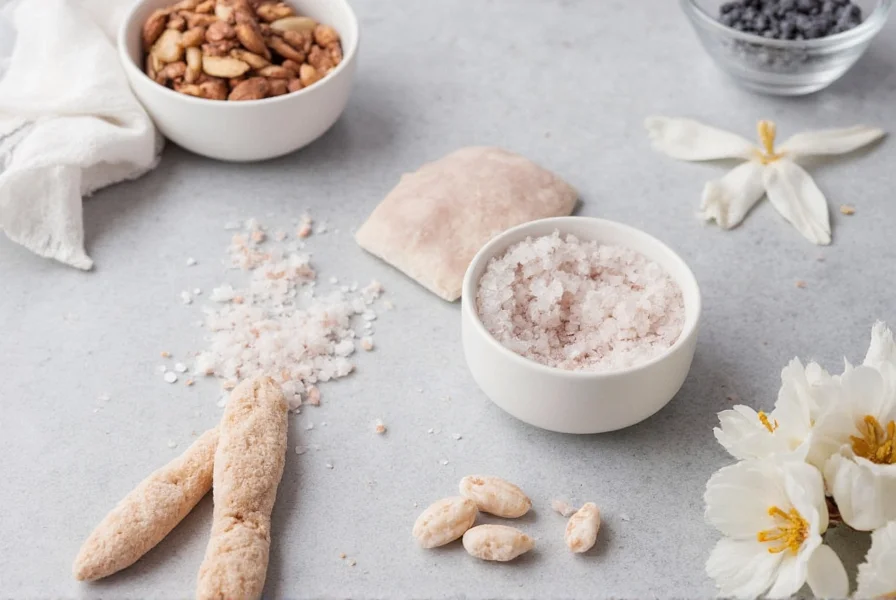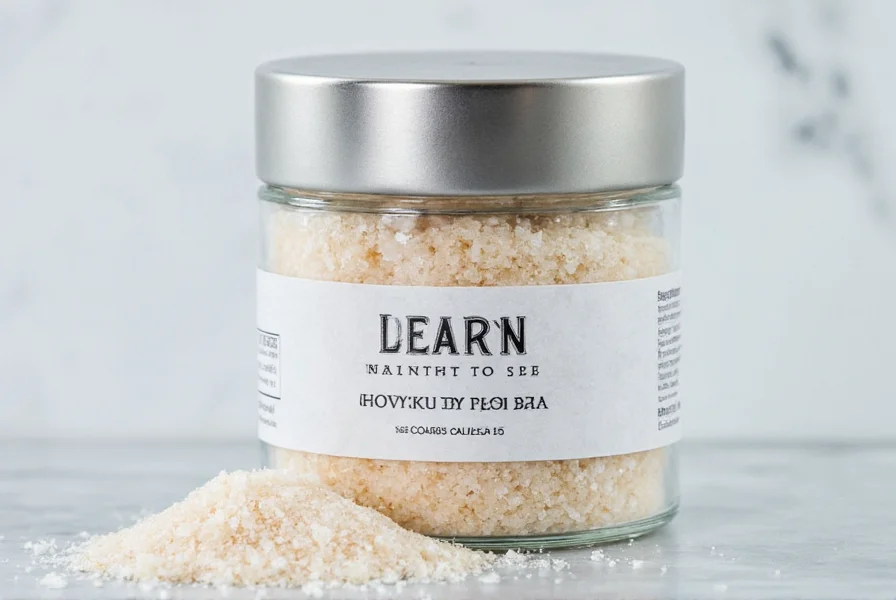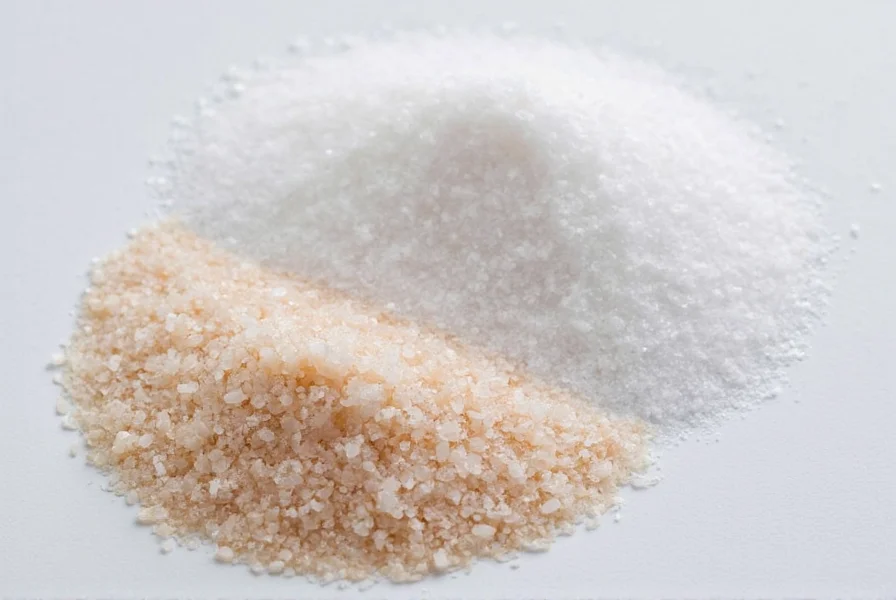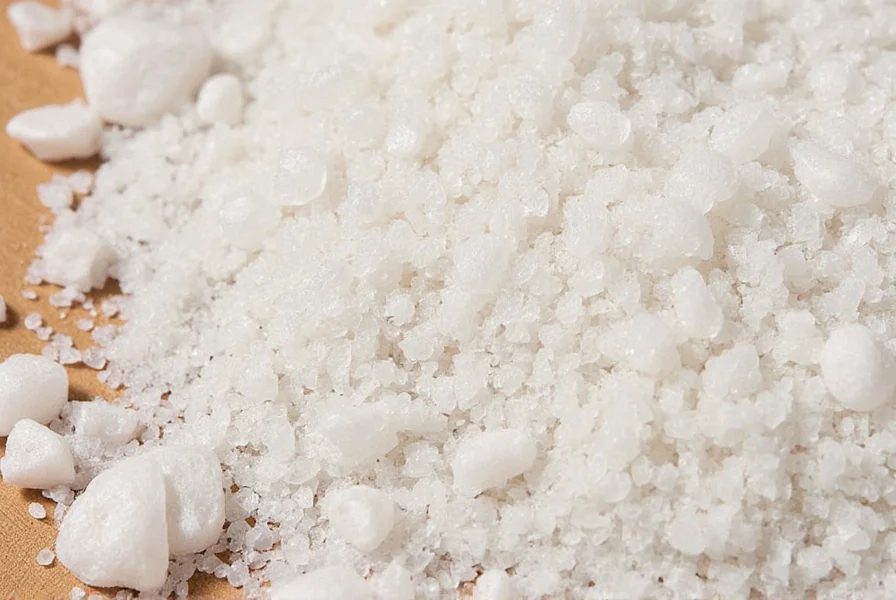| Type of Salt | Texture | Minerals | Best For |
|---|---|---|---|
| Sea Coarse Salt | Rough, chunky | High | Finishing, grilling, brining |
| Table Salt | Fine, powdery | Low | Cooking, baking |
| Kosher Salt | Crunchy, coarse | Moderate | Seasoning meats, koshering |
| Himalayan Pink Salt | Crystalline, granular | Very high | Presentation, decor, spa |
| Product Name | Features | Advantages | Use Cases | Target Audience |
|---|---|---|---|---|
| Maldon Sea Salt Flakes | Delicate pyramid-shaped flakes, hand-harvested | Crispy texture, mild flavor | Desserts, salads, grilled veggies | Gourmet chefs and foodies |
| Celtic Grey Salt (Guérande) | Moist, coarse crystals rich in minerals | Earthy flavor, high nutrient content | Seafood, soups, brines | Health-conscious cooks |
| Hawaiian Black Lava Salt | Coarse black crystals with activated charcoal | Striking appearance, smoky undertones | Presentation dishes, cocktails | Entertainers, mixologists |
| California Redmond Real Salt | Naturally pinkish hue, unrefined | Unique color, clean taste | All-purpose seasoning | Everyday home cooks |
Introduction
Sea coarse salt is a versatile culinary ingredient that enhances flavor and texture in a variety of dishes. Unlike refined table salt, it retains natural minerals and provides a satisfying crunch when used as a finishing salt. This guide covers everything you need to know about using sea coarse salt effectively in cooking, storage tips, and how to choose the best variety for your needs.

What is Sea Coarse Salt?
Sea coarse salt is harvested from evaporated seawater and retains natural minerals like magnesium, potassium, and calcium. Its larger crystal structure makes it ideal for finishing dishes where texture and slow dissolution are desired.

Benefits of Using Sea Coarse Salt
- Natural Minerals: Contains trace minerals that enhance flavor and provide minor nutritional benefits.
- Better Texture: Large crystals create a satisfying crunch and melt slowly for balanced seasoning.
- Flavor Enhancement: Brings out natural flavors without overpowering dishes.
- Versatile Applications: Perfect for finishing dishes, brining, grilling, and gourmet presentations.
How It Compares to Other Salts
Creative Uses in the Kitchen
- Salt Crust Roasting: Encrust fish or meat in damp coarse salt before roasting to lock in moisture and infuse subtle flavor.
- Brining Masterclass: Use coarse sea salt for homemade brines that result in juicier meats and poultry.
- Sweet & Salty Desserts: Sprinkle on caramel, chocolate, or fruit desserts for a sophisticated flavor contrast.
- Homemade Popcorn: Toss warm popcorn with melted butter and coarse salt for a restaurant-quality snack.
- Salt Block Cooking: Heat a salt block to sear steaks or vegetables directly on it for dramatic presentation.

Buying Guide: Choosing the Right Sea Coarse Salt
Storing Like a Pro
- Airtight Containers: Prevents clumping and keeps impurities out.
- Keep Dry: Store in a cool, dry place away from steam or humidity.
- Use Glass or Ceramic: These materials don't absorb odors or moisture.
- Add Rice Grains: Helps absorb excess moisture in humid environments.
Frequently Asked Questions
What's the difference between sea coarse salt and table salt?
Sea coarse salt is harvested from evaporated seawater and retains natural minerals like magnesium, potassium, and calcium. It has larger, chunky crystals compared to the fine, powdery texture of table salt, which is highly refined and often contains anti-caking agents. Sea coarse salt provides a more complex flavor profile and is better for finishing dishes, while table salt dissolves quickly and is better for precise measurements in baking.
Can I use sea coarse salt for baking?
Yes, but with caution. Sea coarse salt can be used in baking, but you'll need to adjust the quantity since its larger crystals contain less salt by volume than fine table salt. As a general rule, use about 1.5 times more sea coarse salt to achieve the same level of saltiness as table salt. For recipes requiring precise measurements (like bread baking), it's best to either use table salt or grind the coarse salt to a finer consistency first.
Is sea coarse salt healthier than regular salt?
All salt is primarily sodium chloride, but sea coarse salt retains trace minerals like magnesium, potassium, and calcium that are stripped away during the refining process of table salt. While these minerals offer some nutritional benefits, the amounts are relatively small. The main health advantage of sea coarse salt is that its larger crystals often lead people to use less overall, as the flavor impact is more pronounced. However, from a strictly sodium-content perspective, they're quite similar.
How long does sea coarse salt last?
Properly stored sea coarse salt has an indefinite shelf life. Salt is a natural preservative and doesn't spoil. However, for best quality and to prevent clumping (especially with mineral-rich varieties that may contain some moisture), store it in an airtight container in a cool, dry place. Adding a few grains of rice can help absorb excess moisture in humid environments.
Why is sea coarse salt more expensive than table salt?
Sea coarse salt is typically more expensive due to its harvesting and processing methods. It's often hand-harvested from specific coastal regions and undergoes minimal processing to preserve its natural minerals and texture. Table salt, by contrast, is heavily processed, often sourced from mined deposits, and produced at large industrial scales, making it cheaper to manufacture. The artisanal nature and perceived quality of sea coarse salt contribute to its higher price point.
Can I use sea coarse salt for non-cooking purposes?
Absolutely! Sea coarse salt has several non-culinary uses. It can be used in DIY beauty treatments like exfoliating scrubs, bath soaks for muscle relaxation, and even as a natural household cleaner. The mineral content makes it particularly beneficial for skin treatments. Just be sure to use food-grade salt for any applications involving skin contact.
Conclusion
Sea coarse salt is more than just a pantry staple — it's a flavor powerhouse that deserves a prominent spot in your kitchen. From enhancing everyday meals to elevating gourmet creations, this versatile ingredient offers something for everyone.

Whether you're grilling, baking, or just trying to add a little flair to your morning eggs, sea coarse salt delivers big on flavor and function. So go ahead — embrace the crunch, savor the taste, and let your salt do the talking!










 浙公网安备
33010002000092号
浙公网安备
33010002000092号 浙B2-20120091-4
浙B2-20120091-4